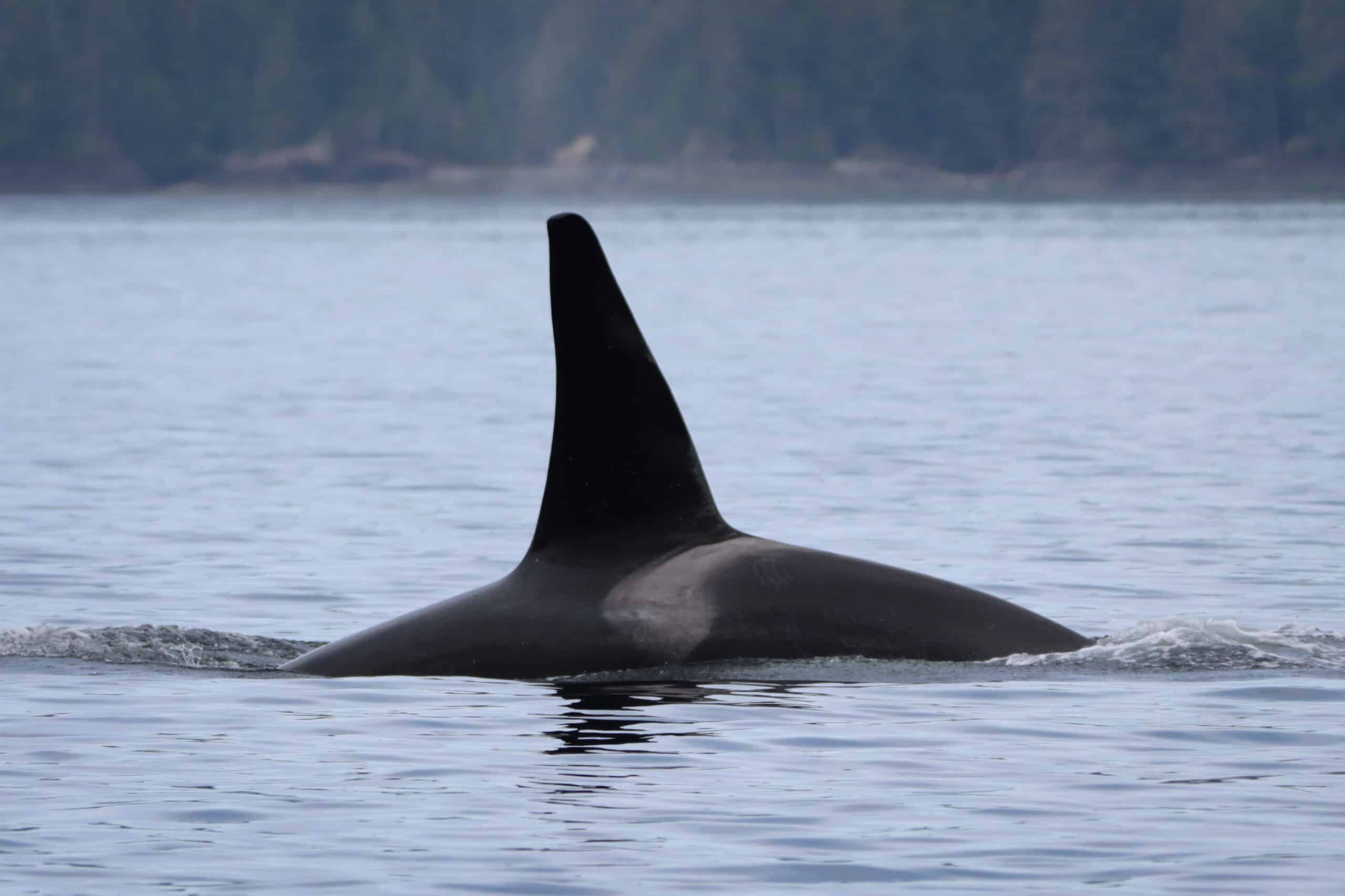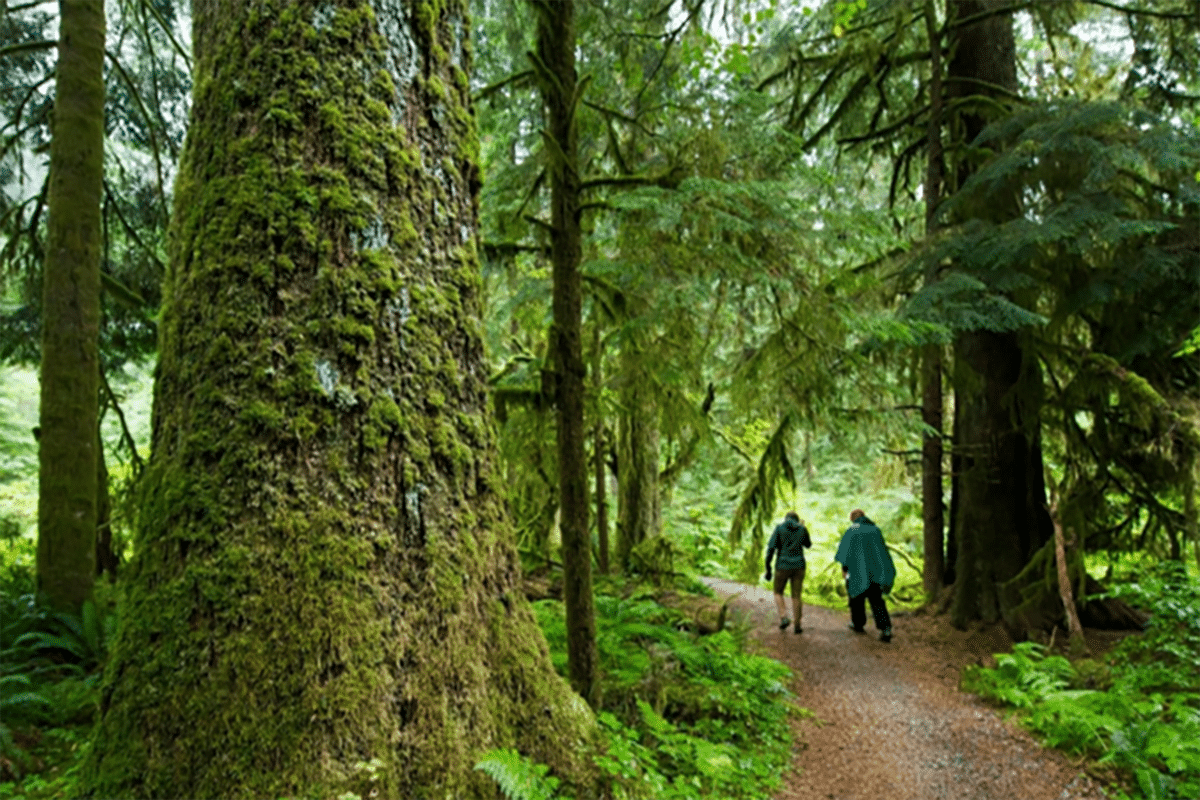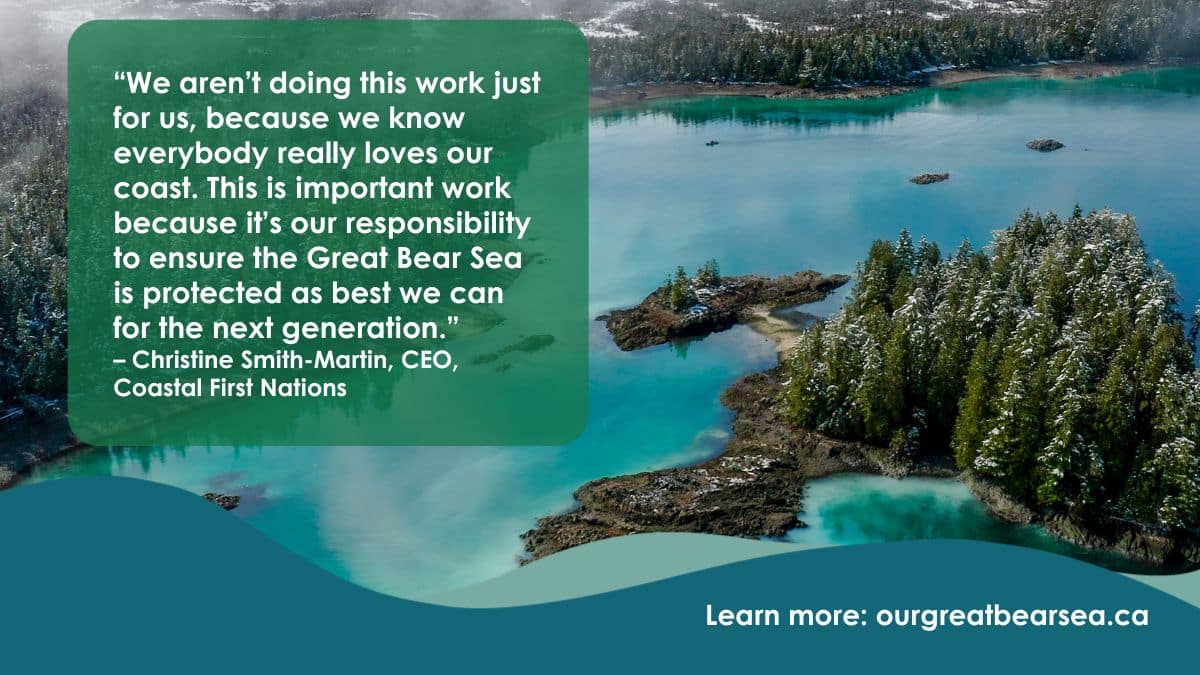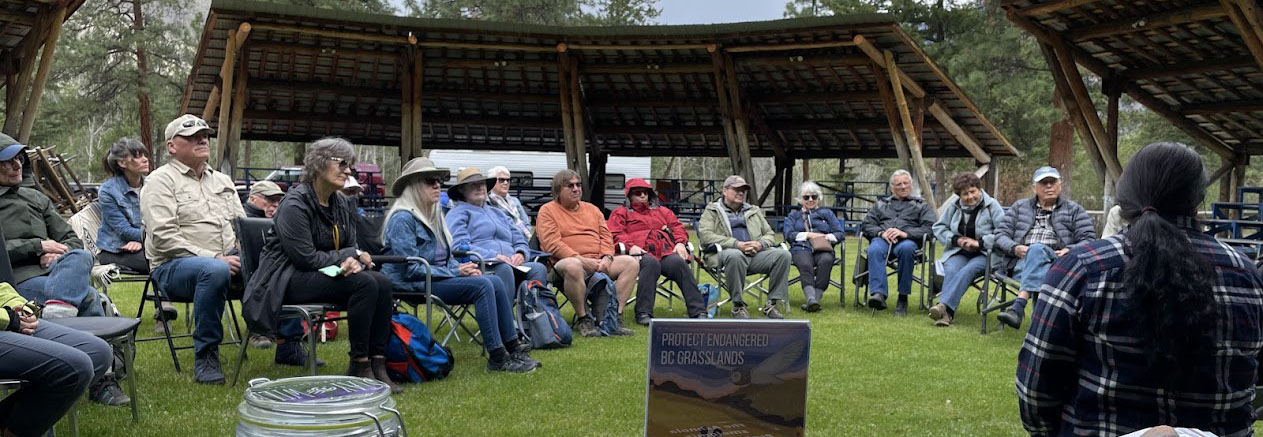Sept. 18, 2024 – by Meg Bjordal, Research and Policy Coordinator
Protecting Biodiversity and Habitat for Species at Risk is the Key to our Shared Futures
BC needs a Biodiversity law, complete with protections for habitat for species-at-risk to ensure a future where wildlife and people can thrive.
British Columbia lists over 1,700 species at risk and counting, yet there is no effective provincial law to protect them or their habitat. Some of BC’s most iconic animals are on this list including southern mountain caribou, grizzly bears and southern resident killer whales. The biggest threat most endangered species face is from habitat loss and degradation.
For example, southern mountain caribou and spotted owls – two of the most threatened wildlife populations in BC, depend on old-growth forests for their homes. Old growth forests are an ecosystem that has long been identified of high conservation importance, but most of it (82%) remains unprotected and clearcutting is continuing.
Pathway to a Biodiversity Law
Out of rising concern for how old-growth forests are managed in the province, an independent review was conducted and released in 2020. The Old Growth Strategic Review put forward 14 recommendations on how to better manage forests based on wide consultation and expert opinions.
All recommendations from this report were adopted, though none have yet been fully implemented. Some of the recommendations outline conditions required for change, and include the need for legislation that establishes “conservation of ecosystem health and biodiversity of British Columbia’s forests as an overarching priority”.
Out of this recommendation came the draft Biodiversity and Ecosystem Health Framework. This framework sets the stage for a needed paradigm shift that prioritizes biodiversity and the health of ecosystems above resource extraction. With continued momentum this could lead to a biodiversity law, and even include protections for species at risk and their habitat.
Protecting Biodiversity Benefits Wildlife and People
Protecting habitat for species-at-risk not only provides a future for BC’s favourite wildlife, but also for the people who live and recreate in these important places. Healthy, functioning and connected ecosystems facilitate natural processes and animal movements. Meaning that critical planet support systems like nutrient cycling can occur, and that animals can move as needed to find food, shelter and mates. This also allows for mitigation of climate change effects and better ability to adapt. Protecting and restoring habitat, especially large and interconnected landscapes, makes it possible for biodiversity to thrive and ensures functioning ecosystems.
Sept. 9, 2024
Our Nature & Climate debates bring candidates in your riding together to discuss conservation, climate policy, and environmental issues. Hear what they have to say, ask candidates questions directly, and make your community’s concerns heard this election. This debate is co-hosted with local youth from our Young Leaders in Conservation Program (YLICP). Young people are especially encouraged to attend and participate. CPAWS-BC will be moderating the debates and asking candidates about their positions on various environmental issues, followed by an open audience Q&A.
Join us for food and refreshments when doors open, at no charge. Please come mingle and share your views with the candidates. Register now to save your seat!
Find a Candidates Debate near you!



The abyssal plains of the deep sea floor are often viewed as vast, dark, empty spaces. But the deep sea far off the BC coast couldn’t be more different. Dotting the flat seascape are geologic wonders such as seamounts and hydrothermal vents teeming with abundant otherworldly marine life!
Located 150 km west of the coast of Vancouver Island, deep in the ocean, is a unique and spectacular underwater world. The Tang.ɢ̱wan – ḥačxwiqak – Tsig̱is MPA (TḥT for short) will protect a network of hydrothermal vents (think deep sea geysers or hot springs releasing superheated and mineral-enriched water) and seamounts (ancient volcanic mountains that can tower higher than Whistler Mountain). These biological hotspots provide habitat, shelter, food, spawning grounds, and nurseries for wildlife. It truly is a “Deepsea Oasis.”
Canada’s first MPA, Endeavour Hydrothermal Vents, which protected 5 vents and 97 km2 since 2003, is now part of this new MPA that spans over 133,000 km2.
Indigenous-led Conservation
The name for this new MPA is three words from the Haida, Quatsino, Nuu-chah-nulth and Pacheedaht Nations.
- Tang.ɢ̱wan: a Haida word meaning deep ocean (pronounced “Tung – Gwun”)
- ḥačxwiqak: a Nuu-chah-nulth and Pacheedaht word meaning deepest part of the ocean (pronounced “huch/khwi/kuk”)
- Tsig̱is: a Quatsino word referring to a monster of the deep (pronounced “tsee-geese”)
It’s easier to pronounce than it seems! If you need some more help, listen to the pronunciation.
This incredible area will be co-managed by the Nuu-chah-nulth Tribal Council, Council of the Haida Nation, Pacheedaht First Nation, Quatsino First Nation and the Government of Canada. In the spirit of reconciliation, it will be managed using both science and traditional knowledge and uphold First Nations rights to governance.
Weird and Wonderful Wildlife
The area is home to some of the weirdest and most wonderful creatures on the planet:
- Dumbo octopuses are a group of deep sea octopuses that flap ear-like flippers on their heads to move around, much like Dumbo the elephant in the famous Disney movie.
- Tubeworms are unlike almost any other creature on the planet. Instead of getting their energy from sunlight , they rely on bacteria that are able to produce energy from the mineral rich water expelled from hydrothermal vents.
- Sea pigs are actually types of sea cucumbers, named for their pinkish colour. They use their tubelike feet to walk along the sea floor while they feed on organic matter that sinks down from shallower waters.
- Last year, scientists discovered a seamount covered in a million skate eggs in the MPA. The ancient volcano is spouting warm fluid, providing little-known species of skates with an ideal nursery. Scientists believe the geothermal heat helps incubate the eggs and speeds up development.
The deep sea is a dark and mysterious place — under-mapped and under-explored. We have only begun to scratch the surface of what lives here. Who knows what other amazing creatures will be found in the future?
Upholding Strong Protection is a must
Canada’s new MPA protection standard will prohibit oil and gas exploration, development, and production, disposal at sea of waste, and most importantly for this area specifically, mineral exploration and exploitation and the use of bottom-trawl gear. With the growing need for rare minerals to power electric vehicles, deep sea environments are under threat from an industry that would tear apart wildlife-rich seamounts. This environment is also especially vulnerable to bottom trawling which uses heavy weighted nets dragged on the seafloor to indiscriminately capture any and all sea life, including rare protected species and habitat-forming corals and sponges.
Protection of these important and rare ecosystems would not be possible without the support of the public who signed petitions, wrote letters, and participated in consultations. Thank you also goes out to First Nations leadership and elected officials for helping secure legal protections. And finally, thanks are given to the scientists, communicators, and marine planning professionals from Federal and Indigenous governments, non-profit organizations, and universities such as those at the Northeast Pacific Deep-sea Exploration Project (NEPDEP). They explored and discovered these amazing places, conveyed their importance to the world, and worked tirelessly behind the scenes conducting the much needed technical work to make this new Marine Protected Area a reality.
This Is Only The Beginning
The MPA work doesn’t stop with designation. The Haida, Quatsino, Nuu-chah-nulth and Pacheedaht Nations and the Government of Canada must now work to form a management board. An advisory committee, with conservation groups like CPAWS-BC, will also be established. Together, they will create a management plan to make sure we know the MPA is protecting the ecosystem, which means monitoring, enforcement and management of human activities. We will be there to help ensure this special part of the ocean is strongly protected.
Read more about THT.
July 9, 2024 – Debra Sinarta, Marine Research Coordinator, Ocean Program
Despite success stories and significant progress in marine conservation initiatives, their planning, implementation, and effective management are often hindered by a seemingly stale yet crucial element: finance.
We see the same problem in many different forms: conservation projects never get started because of a lack of necessary funds, or initiatives get underway but progress falls short when the money runs out.
To reach the United Nations Convention on Biological Diversity’s goal of protecting 30% of the ocean by 2030 globally, the estimated annual management costs range between $103 billion and $178 billion, according to a report (Waldron et al., 2020). However, global investments in protected areas hover around $24 billion per year, highlighting a significant boost in funding is needed to meet this goal.
It’s a problem that’s on the verge of being solved in parts of BC.
Over the past year, we’ve started to see announcements that will secure the long-term health of nature. In November, we saw the Nature Agreement and the BC Conservation Fund. On June 25, 2024, a similar $335 million agreement was announced for the Great Bear Sea, which covers two-thirds of the coast of British Columbia!
The Great Bear Sea is an ecological and cultural treasure that supports vast open ocean, estuaries, kelp forests, coral and sponges, and deep fjords. Unfortunately, overfishing, habitat degradation, increased shipping, and climate change are threatening the health and resilience of the Great Bear Sea and the coastal peoples that depend on it.
Image courtesy of ourgreatbearsea.ca // Photo Credit: Kitasoo Xai’Xais Territory / Moonfish Media
We need a two-pronged approach to help address these problems: creating a Marine Protected Area Network that considers the ecosystem as a whole, and securing the necessary lasting funding to bring it to life.
The Great Bear Sea Project Finance for Permanence initiative can help to advance both. Here’s how:
Long-Term and Large-Scale Impact:
The Project Finance for Permanence (PFP) is an innovative and proven conservation finance model that combines public and private investments from a diverse array of partners—including governments, NGOs, private investors, and local communities— to support permanent conservation strategies and sustainable economic development.
Often, conservation efforts rely on one-time or limited donations or grants. Although these funds are crucial for supporting individual projects, depending on incremental funding can introduce instability, lack of continuity, and gaps in protection.
Rather than seeking short-term funding to support one site, this new model aims to secure the necessary long-term financing, governance agreements, and strong conservation and development goals needed for lasting success across large-scale conservation efforts.
Collaborative Management:
The PFP approach unites governments, NGOs, donors, and local communities to fulfill a common conservation vision. It coordinates resources and efforts across these key partners to ensure that strong, sustained governance is in place for designing and implementing conservation commitments.
Following the Great Bear Sea MPA Network endorsement one year ago, collective and timely work is needed to bring the network to life. The Great Bear Sea announcement is an essential backing to advance the collaborative implementation of the Network Action Plan. This stable funding will be crucial in building capacity across partners, ensuring the continued management and monitoring of the MPAs, and fostering Indigenous-led governance in the decision-making process.
It’s anticipated it will also support the creation of more than 3,000 new jobs and 200 new businesses over the next 20 years. This is critical to ensure that those living near these vulnerable habitats can thrive where they live and help ensure local support. These opportunities will span diverse sectors, including marine stewardship, renewable energy, sustainable fisheries, and eco-cultural tourism. This will not only bolster local communities but also contribute to a sustainable and prosperous future for the region.
Holistic and Shared Vision:
The Great Bear Sea Initiative and MPA Network are the result of nearly two decades of collaborative work led by 17 First Nations, who’ve been stewarding these lands and waters for thousands of years, in partnership with the Government of Canada and the Province of British Columbia. And the vision is clear: Indigenous-led governance and stewardship, supported by stable, self-determined finance, to ensure the well-being of people and ecosystems across the Great Bear Sea for future generations.
Map of the proposed Great Bear Sea Marine Protected Area Network.
The Great Bear Sea PFP is transforming how we finance and manage conservation, ensuring ecological, social, political, and financial sustainability. This is an exciting milestone for the lasting protection of the Great Bear Sea and a historic step forward for Indigenous-led conservation. It’s the realization of decades of vision and collaboration across the region. As we look to the future, this initiative showcases the power of collaboration and innovative finance in securing a thriving Great Bear Sea for generations to come.
Over the May long weekend, our Land and Freshwater team travelled to the nxʷəlxʷəltantət (South Okanagan-Similkameen) to participate in the Meadowlark Nature Festival. CPAWS-BC has worked with partners in the region over the past two decades to expand protection for the increasingly endangered grasslands, with our work focusing particularly on the proposed South Okanagan-Similkameen National Park Reserve and more recently the nʔaysnúlaʔxʷ (Ashnola) sPA (sməlqmíx Protected Area).
Grasslands in BC have more species at risk than any other ecosystem in the province. They cover just 1% of the province, but are home to 30% of at-risk species in BC, such as the burrowing owl and bighorn sheep, making them one of the most important conservation priorities in BC.
It was amazing to visit protected areas, connect with supporters, talk about the urgent conservation needs of endangered grasslands, and see people participating in a fantastic art session with Ullus Collective Indigenous artists.
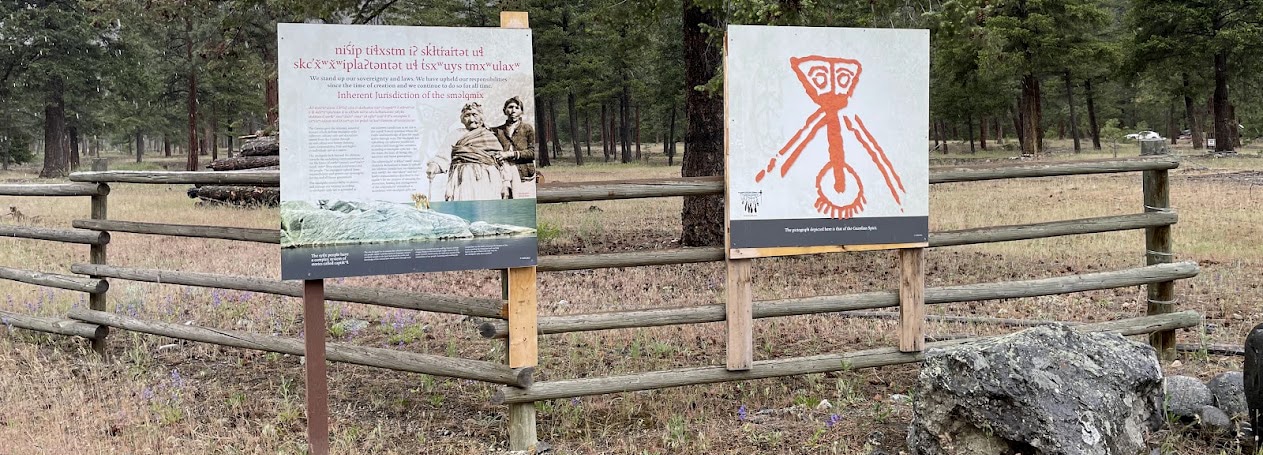
Where the Four Sacred Ecosystems Connect
A journey to protect the Ashnola River Corridor
On Saturday morning we travelled from our base in Penticton, 60 kilometres southwest to the nʔaysnúlaʔxʷ (Ashnola) sPA (sməlqmíx Protected Area) just outside of Keremeos.
Rob Edwards, Lauren Terbasket and Rheana Marchand from the Lower Similkameen Indian Band (LSIB) shared with us and Meadowlark festival participants, their journey to protect the Ashnola River Corridor (or watershed), home to one of the most endangered rivers in the province.
After living through the gradual but profound degradation of some of their lands and water from mining discharge, unsustainable forestry, hunting and other exploitative activities, the sməlqmíx people re-asserted their sovereignty and obligation to protect and conserve the waters and lands, through cultural revitalization and traditional knowledge, throughout the Similkameen watershed. In 2022, the Lower Similkameen declared the entirety of the Ashnola Watershed an Indigenous Protected and Conserved Area (IPCA).
In the summer of 2023, the largest forest fire in the valley since the 1800s, affected 40,000 hectares in the Ashnola sPA. The small team at the LSIB, having declared the IPCA only a year earlier, were already busy implementing conservation and management plans. Now they are also undertaking restoration work to manage the aftermath of the fires and replant millions of tree and shrub seedlings to stabilize and ensure safety around the steep slopes of popular recreation areas.
As we walked around the Ashnola campground and sməlqmíx Protected Area, we learned about the unique grassland shrubs like snowbrush and bitterroot and were able to smell the rain on the parched earth. We were filled with a deep sense of gratitude for their dedication and determination to keep pushing forward to protect and steward these breathtaking lands.
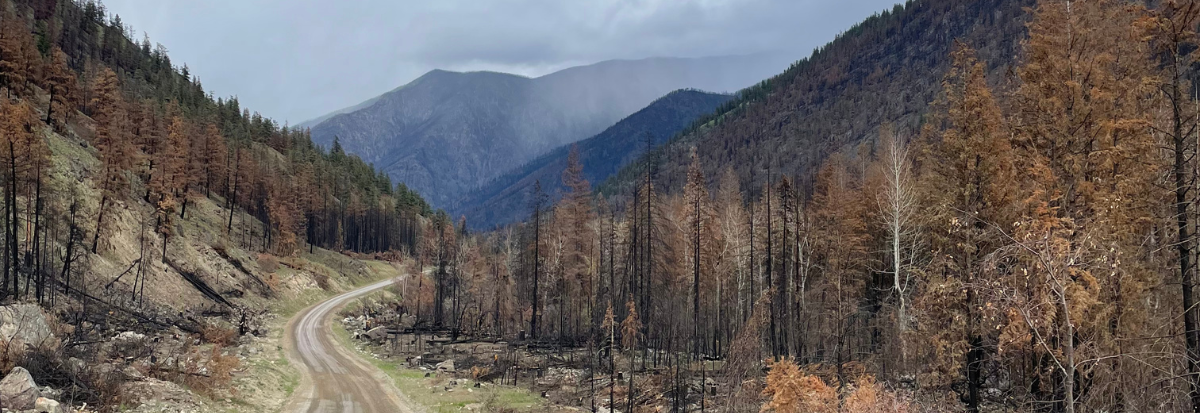
Coexisting with fire
Learning from a wildfire expert
On Saturday evening, back in Penticton at the Okanagan College, we joined Tour 35 – Learning to Coexist with Wildfire in BC led by eminent scholar and UBC Professor of Forest & Conservation Science Lori Daniels.
As the province grapples with the aftermath of the 2023 wildfires, such as the one that went through the Ashnola Valley as we had seen earlier that day, a shift to diversified, evidence-based, adaptive and proactive landscape management, based on science and community knowledge, is critically needed, according to Daniels.
Her presentation called for transformative changes to forest management and highlighted the importance of cultural connections to the land and reintroducing indigenous forest management practices. It echoed what we had heard earlier in the day. Daniels also noted that cultural and prescribed fire removes the build up of plant material and reduces the intensity of naturally occurring wildfires, while also promoting health and resiliency of the land.
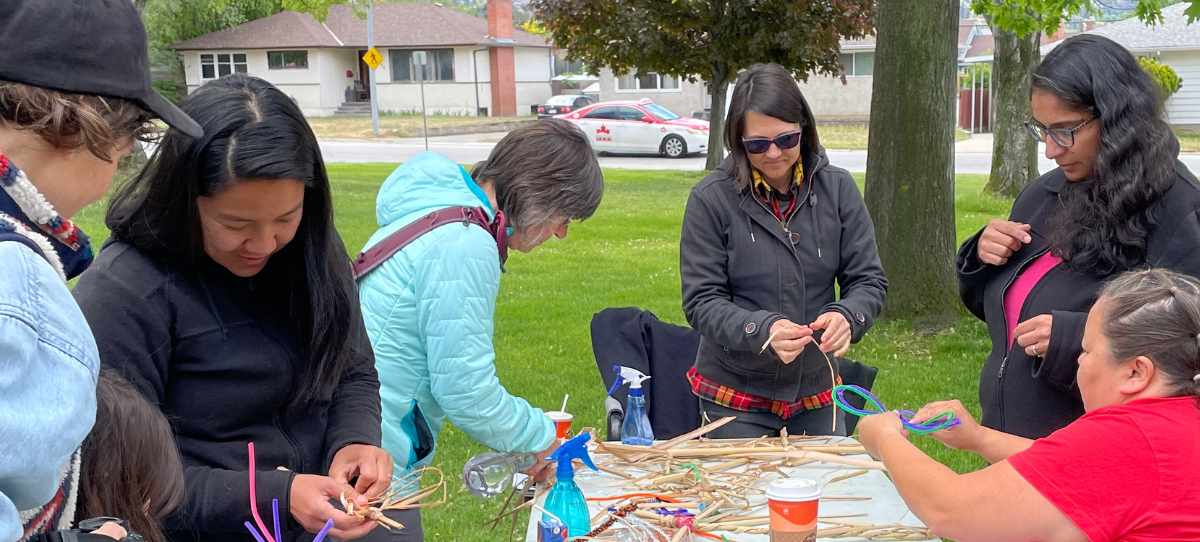
Because we are beautiful – ałi kʷu swiwinumpta
Making art with grassland materials
On Sunday morning we gathered together in the gardens of Leir House for a session led by Victoria Jaenig of Ullus Collective Indigenous artists to learn the art of making dragonflies from traditional locally collected grasses and leaves (as well as some more contemporary materials).
This session provided another way for us to connect with the grasslands we had been learning about.
This event was also a great opportunity to engage in conversations with attendees about the work that CPAWS-BC and partners have been undertaking in the region and highlighted the important relationship between preserving cultural connections to the land and healthy ecosystems.
Ullus Collective has been creating a place to gather and cultivate the unique arts practices of sqilxw artists for over four decades and it was a privilege to be able to spend the morning together.
Our journey home on Highway 3, took us past a dusty white mountain peak, scarred by mining activity, not far from the Ashnola protected area. It underscored the importance of the ongoing work to protect the Ashnola watershed and the nearby proposed South Okanagan-Similkameen National Park Reserve.
Protect endangered BC grasslands
Let elected leaders know we need to protect endangered ecosystems before they’re gone.
Sign the pledge
